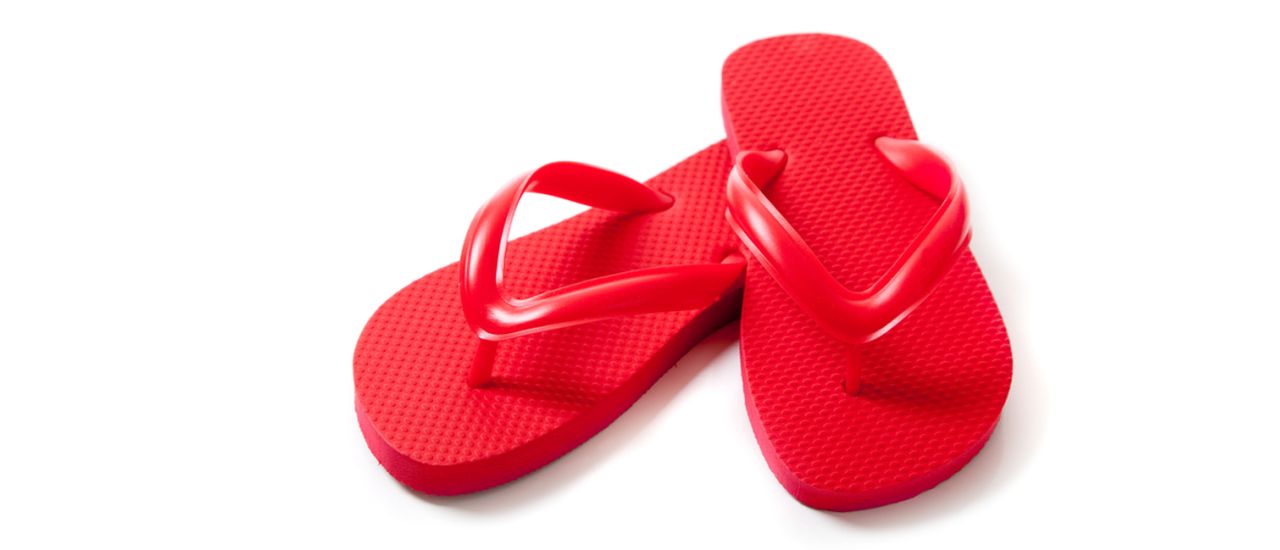By Grant Wood
Summer means beaches, braais and freeing your feet from closed shoes – bring on the flip flops! They’re the season’s footwear of choice, but podiatrists aren’t convinced they’re foot-friendly. Let’s take a look at the pros and cons.
The Pros
Freeing your feet
There’s nothing better than ditching your closed shoes and slipping on a pair of flip flops. They keep your feet cool and form part of the ideal summer outfit – cross trainers don’t exactly look great with your t-shirt and board-shorts.
Preventing Foot fungal infections
It’s beach body season, meaning many men and women will be working hard in the gym to unleash their six-pack.
The downside? You’re going to sweat! And, when you take a shower at the gym, flip flops save the day! Locker room showers are full of fungi that cause fungal infections such as plantar warts and athlete’s foot. Flip flops in the shower offer the perfect protection.
Here’s your guide to the importance of hygiene.
The Cons
Injuries
Everything from stubbed toes to cuts and even stress fractures are all injuries that, more often than not, are a result of the overuse of flip flops.
It’s easy to stub your toe on a rock, twist your ankle when climbing up a hill, or even break a bone or cause a stress fracture. This happens when the muscles in your foot are overused, become tired and aren’t able to absorb the shock.
If you get a cut, it’s very easy for bacteria to get in, which may cause an infection. The overuse of flip flops can also lead to tendonitis – inflammation of the tendons in your foot, which cause pain and can take a long time to heal.
Everyone’s feet are different:
Some people have high arches; some have almost no arch. Your footwear needs to suit your type of foot and this is something that flip flop designs do not do.
They can break easily
The majority of flip flops, especially the cheaper ones, aren’t built to last; some are simply a piece of plastic with two straps attached to hold your foot in place. Any sudden impact may break them.
How to prevent injuries and Infections
- Buy new flip flops when you start to see wear-and-tear on your current pair.
- Choose a pair that has cushioning – many of the popular sport brands have this feature.
- Always make sure that your flip flops are the correct size for your feet. If part of your foot hangs over the edge, you could still come into contact with bacteria that cause fungal infections.
So, to be clear, we’re not saying that you should never wear flip flops – of course you can! But just make sure you follow our advice. Here’s to a fantastic summer!
Sources: http://www.dispatch.com/content/stories/life_and_entertainment/2011/05/08/flip-flops-arent-as-carefree-as-they-seem.html , http://www.sofootankle.com/blog/flip-flop-pros-and-cons.cfm , https://www.washingtonpost.com/national/health/the-podiatric-dangers-of-flip-flops/2011/03/22/AFCNVobF_story.html , http://orthoinfo.aaos.org/topic.cfm?topic=a00112 , http://www.foot-pain-explored.com/ankle-tendonitis.html

